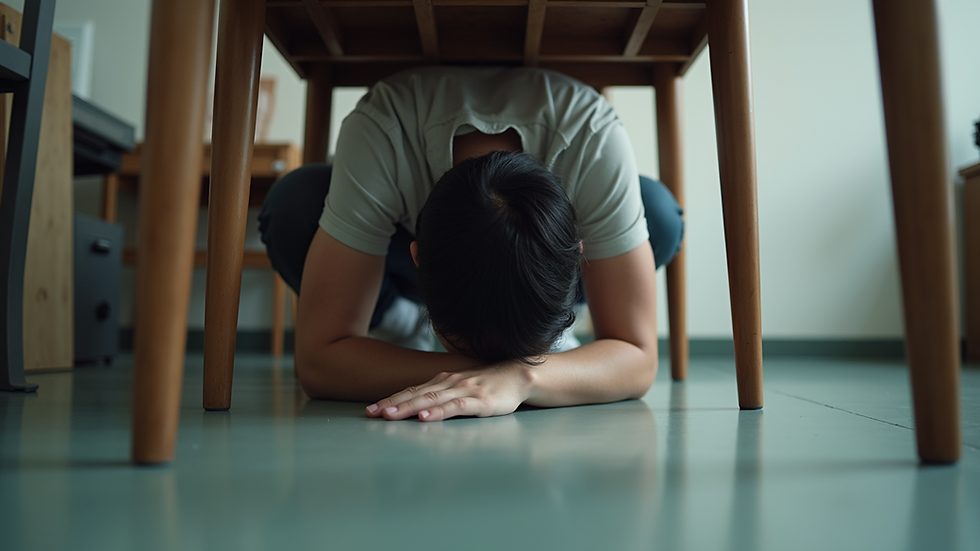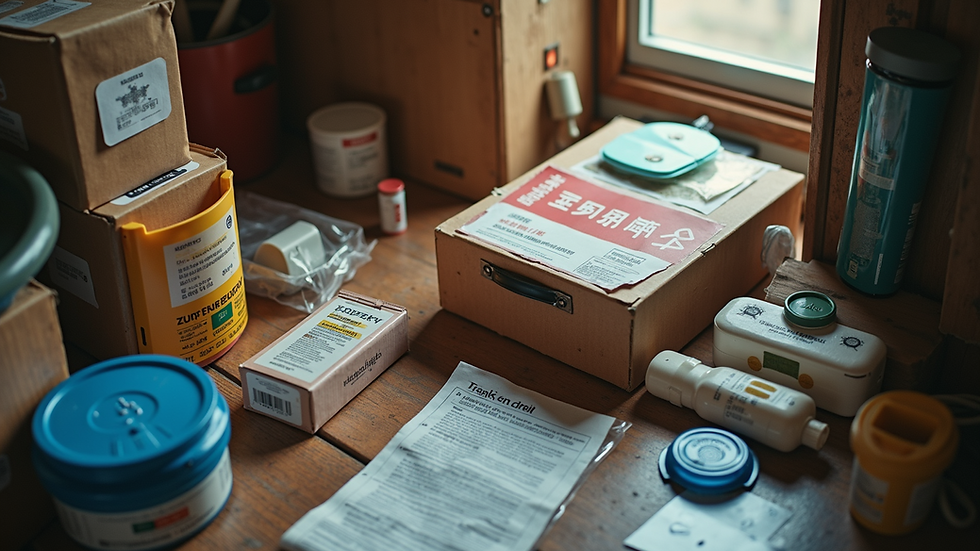Key earthquake safety guidelines to keep your family safe
- anita M.

- Jul 20, 2025
- 3 min read
Earthquakes can strike without warning, causing significant damage and posing serious risks to life and property. Preparedness is crucial in minimizing the impact of such natural disasters. This blog post aims to provide you with comprehensive guidelines on staying safe during an earthquake, ensuring that you and your loved ones are ready to respond effectively when the ground starts to shake.
Earthquake Safety Guidelines
Understanding how to respond during an earthquake is essential. Most injuries during earthquakes are due to falling objects, structural damage, and panic. By following a few simple guidelines, we can enhance our safety and potentially save lives.
Prepare Your Home
Begin by ensuring that your home is earthquake-ready. Here are some actionable steps:
Secure Heavy Furniture: Fasten bookshelves, cabinets, and other heavy furniture to the wall. This can prevent them from tipping over during an earthquake.
Use Latches on Cabinets: Install latches on kitchen cabinets to keep dishes, glasses, and hazardous materials securely in place.
Anchor Appliances: Secure major appliances, such as your refrigerator and water heater, to prevent them from moving.

These steps can help in reducing the risk of injuries and damage in your home. Also, take inventory of emergency supplies such as flashlights, batteries, first-aid kits, and non-perishable food items.
What Are the 5 Steps to Earthquake Safety?
When an earthquake strikes, knowing what to do is critical. Here are five steps to follow:
Drop: As soon as you feel the tremors, get down on your hands and knees. This position helps you stay low and protect yourself from falling objects.
Cover: Seek shelter under a sturdy piece of furniture, such as a table or desk. If none is available, protect your head and neck with your arms and seek a low-lying area. Stay away from windows and heavy objects.
Hold On: Hold on to your shelter until the shaking stops. If you are under furniture, be prepared to move with it if it shifts.
Stay Indoors: If you are indoors during an earthquake, remain there. Exiting can expose you to dangers from falling debris.
Follow Local Guidelines: After the shaking, follow emergency services and local authorities' instructions and updates.

These five steps form a fundamental part of your earthquake safety guidelines. Practicing these techniques during emergency drills can make a significant difference in real situations.
Create an Emergency Plan
An effective emergency plan is vital. Discuss with your family or household members what to do before, during, and after an earthquake. Here’s how to create one:
Identify Safe Spots: Determine the safest locations in each room of your home, such as under sturdy furniture or against interior walls.
Establish Communication Protocols: Ensure everyone knows how to reach one another in case of separation. Choose meeting points inside and outside your neighborhood.
Practice Regularly: Conduct regular earthquake drills so all members are familiar with the plan.

Stay Informed
Knowledge is power when it comes to earthquake safety. Staying informed can help you react promptly and appropriately. Here are some ways to keep yourself updated:
Follow News Outlets: Monitor local news for weather conditions and earthquake warnings.
Use Technology: Install emergency alert apps on your phone to receive notifications about earthquakes in your area.
Explore Resources: Consider visiting reputable sites like earthquake safety guidelines for preparedness tips and resources.
Post-Earthquake Safety Tips
After the shaking stops, safety doesn’t end. Here are important steps to consider post-earthquake:
Check for Injuries: Assess yourself and others for injuries. Administer first aid as necessary.
Inspect Your Home: Look for damage to your home, including gas leaks, structural damage, or electrical problems. If you smell gas, evacuate immediately and report it.
Stay Updated: Continue to listen to news updates for information regarding aftershocks or emergency procedures.
By following these guidelines, you can minimize the risks associated with earthquakes. Preparing ahead helps ensure your safety and that of your loved ones.
Final Thoughts on Earthquake Preparedness
Effectively preparing for an earthquake can significantly reduce the potential damage and injuries caused by this natural disaster. From securing your home to developing an emergency plan, each step plays a crucial role in how you respond during and after an earthquake.
The importance of practicing and regularly updating your preparedness plan cannot be overstated. Embrace these guidelines and remain vigilant, and you can navigate the challenges that come with earthquakes more confidently. Your safety and well-being depend on your preparation. Stay ready, stay safe!




Comments